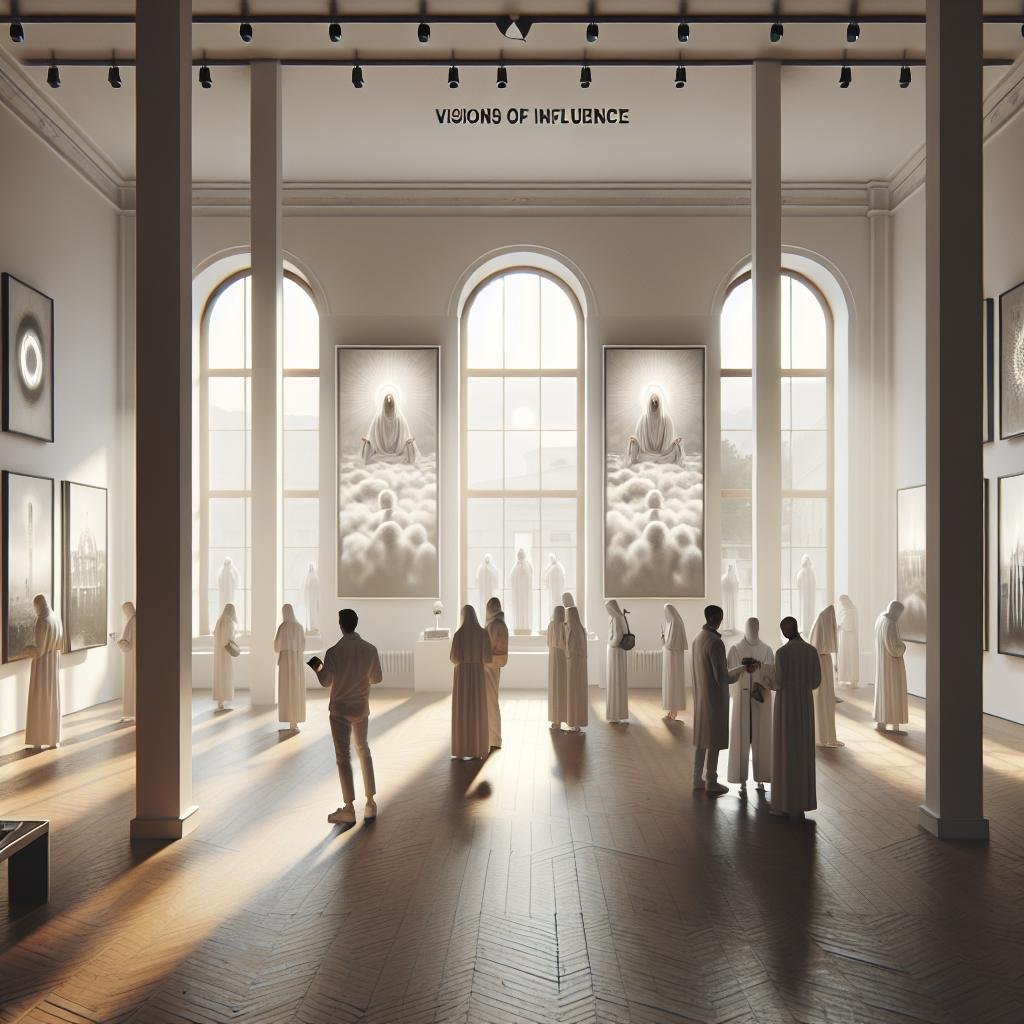
AI-Enhanced Trump Photo: The Real Story Behind the Viral Papal Image
Former President Donald Trump shared an AI-generated image of himself dressed as the Pope on his Truth Social platform this week, drawing both amusement and concern across social media channels. The digitally altered photo shows Trump wearing the traditional white papal garments, complete with the recognizable white skullcap, as he stands before an enthusiastic crowd. This unusual post comes amid ongoing discussions about the role of artificial intelligence in political discourse and the spreading of synthetic media.
What Exactly Did Trump Share?
On Friday, the former president’s official Truth Social account posted the AI-generated image without any accompanying caption or explanation. The striking visual depicts Trump in full papal regalia, seemingly addressing a crowd of supporters. The image quality and certain visual anomalies clearly indicate it was created using AI image generation technology, not an actual photograph.
The post quickly gained traction across multiple social platforms, with users reposting and commenting on the unusual image. Many viewers immediately recognized the telltale signs of AI generation, including slightly unnatural hand proportions and inconsistent background elements typical of current AI image creation tools.
This isn’t the first time Trump has shared AI-generated content. Earlier this year, his campaign posted AI-created images depicting him with Black supporters in Chicago, which sparked similar discussions about the ethics of synthetic media in political communications.
The Context Behind the Pope Image
The timing of this image is noteworthy as it comes during a period when Trump is actively campaigning for the 2024 presidential election. While his campaign has not officially commented on the purpose of sharing this particular image, political analysts suggest it may be intended to appeal to Catholic voters, who represent a significant voting bloc in several key swing states.
Catholic voters have historically been divided in their political support, with no single party consistently winning their majority. In the 2020 election, Catholic voters split nearly evenly between Trump and Biden, making them a crucial demographic for the upcoming election.
Some political commentators view the image as a lighthearted attempt at humor, while others interpret it as a strategic move to position Trump as a spiritual or moral leader figure among religious conservatives. The Catholic Church has not officially responded to the image as of this writing.
The Growing Role of AI in Political Communication
This incident highlights the increasingly prevalent use of AI-generated content in political communications. As AI tools become more accessible and sophisticated, campaigns and political figures have begun incorporating them into their media strategies.
Modern AI image generators can create highly realistic photos that show individuals in scenarios that never actually occurred. These tools use complex neural networks trained on millions of images to generate new visuals based on text prompts. A simple instruction like “Donald Trump dressed as the Pope” can produce multiple variations of such an image in seconds.
The technology behind these images has advanced rapidly over the past few years. What once required significant technical expertise and computing resources is now available through user-friendly interfaces accessible to anyone with an internet connection. This democratization of AI image creation has profound implications for political messaging and media literacy.
The Ethics and Legality of AI-Generated Political Content
The increasing use of AI-generated content in political contexts raises important ethical and legal questions. Unlike traditional photo editing, which alters existing photographs, AI image generation creates entirely new visuals that depict scenes that never actually happened.
Currently, U.S. laws regarding the use of such images in political contexts remain somewhat underdeveloped. The Federal Election Commission has begun discussions about potential regulations for AI-generated content in campaign materials, but comprehensive rules have not yet been established.
Social media platforms have also been working to develop policies around synthetic media. Meta (formerly Facebook) and Twitter (now X) have implemented various measures to label AI-generated content, though enforcement remains challenging as the technology continues to evolve rapidly.
Election integrity experts express concern that as AI-generated images become more realistic and widespread, they may contribute to misinformation if viewers mistake them for authentic photographs. This concern is particularly acute during election seasons when visual media can significantly influence public perception.
Real-World Example
To understand the potential impact of such images, consider a recent case in New Hampshire where AI-generated robocalls mimicking President Biden’s voice urged voters not to participate in the primary election. The incident prompted swift action from state authorities who launched investigations into what they described as voter suppression through deceptive AI technology. This example demonstrates how synthetic media can potentially interfere with democratic processes when deployed strategically.
Unlike that clear attempt at deception, Trump’s papal image appears to have been shared as a meme or attention-grabbing post rather than with claims of authenticity. However, both cases highlight how AI-generated content is becoming a significant factor in political communication strategies.
Public and Media Reaction to the Image
Reactions to Trump’s AI papal image have been predictably divided along political lines. Supporters have generally viewed it as harmless humor or creative expression, while critics have questioned the appropriateness of depicting a political figure in religious garments.
Media coverage has primarily focused on the technology aspect of the story, using it as an entry point to discuss broader concerns about AI in politics. Several technology publications have analyzed the image to identify the specific indicators that reveal its AI-generated nature, turning it into an educational moment about synthetic media detection.
Religious commentators have offered mixed perspectives, with some expressing concern about the potential trivialization of religious symbols and others dismissing it as inconsequential political theater. The Vatican has not issued any official comment regarding the image.
Social media platforms have seen lively debates about whether such images should be labeled clearly as AI-generated. These discussions reflect the growing awareness among the public about the presence of synthetic media in their information ecosystem.
The Broader Implications for Campaign Communication
As the 2024 election cycle continues to unfold, campaign communication experts anticipate an increase in AI-generated content across all campaigns. The technology offers several strategic advantages: it can be produced quickly, at minimal cost, and can be tailored to specific audiences or messaging goals.
Political campaigns are already exploring various applications beyond simple image generation. These include customized videos addressing individual voters by name, targeted social media content optimized for specific demographics, and even AI-generated speech writing assistance.
Voters may soon need to develop new media literacy skills to distinguish between authentic and synthetic campaign materials. Educational initiatives focused on helping citizens identify AI-generated content are becoming increasingly important in maintaining the integrity of political discourse.
For campaigns, the challenge lies in finding the appropriate balance between leveraging new technologies and maintaining transparency with voters. As public awareness about AI-generated content grows, deceptive uses may backfire and damage candidate credibility.
Looking Forward: The Future of AI in Politics
Technology experts predict that AI-generated content will become increasingly sophisticated and harder to distinguish from authentic media. This evolution presents both opportunities and challenges for democratic processes.
Some political strategists advocate for preemptive regulation to establish clear guidelines for the use of AI in campaign communications. Proposed measures include mandatory disclosure requirements for AI-generated content and penalties for deceptive applications.
Others argue that education and media literacy represent more effective approaches than regulation, which may struggle to keep pace with rapidly evolving technology. This perspective emphasizes empowering voters to critically evaluate the media they consume rather than restricting the creation of such content.
What remains clear is that incidents like Trump’s papal image represent just the beginning of AI’s role in political communication. As capabilities advance and adoption increases, voters, campaigns, and regulatory bodies will all need to adapt to this new reality.
The Technical Side: How These Images Are Created
The AI systems used to create images like the Trump papal photo typically employ a technology called diffusion models. These sophisticated programs begin with random noise and gradually refine it into coherent images based on text descriptions or “prompts.”
Popular platforms for generating such images include DALL-E, Midjourney, and Stable Diffusion. These tools have become increasingly accessible to the general public, with some requiring only basic text prompts to generate complex, realistic visuals.
The quality of AI-generated images has improved dramatically in recent years. Early versions often produced obvious distortions, particularly with human features like hands and facial expressions. While current technology still has recognizable flaws, they are becoming less obvious to casual observers.
Experts in digital forensics can identify AI-generated images through several technical markers, including inconsistent lighting patterns, unnatural textures, and mathematical regularities that don’t occur in actual photographs. However, these detection methods must continuously evolve as generation technology improves.
What Voters Should Know
As consumers of political content, voters should approach visually striking or unusual images with healthy skepticism. Several practical strategies can help identify potentially AI-generated content:
- Look closely at hands, fingers, and facial features, which AI systems often struggle to render consistently
- Check for unusual background elements or inconsistent lighting
- Consider the source and context of the image
- Use reverse image searches to find earlier or original versions
- Be particularly wary of emotionally provocative images that seem designed to elicit strong reactions
Developing these critical evaluation skills will become increasingly important as campaigns incorporate more AI-generated content into their communication strategies. The ability to distinguish between authentic and synthetic media will be a crucial aspect of civic engagement moving forward.
Remember that sharing AI-generated content without proper context can inadvertently contribute to confusion, regardless of political affiliation. When encountering such images, consider adding appropriate context if you choose to share them.
Technological Perspectives
According to The Electronic Frontier Foundation, the rapid advancement of generative AI technologies necessitates new approaches to media literacy. Rather than focusing solely on whether an image is “real” in the traditional sense, viewers should consider the context, purpose, and potential impact of synthetic media.
Technology ethicists emphasize that the issue isn’t necessarily the creation of such images but rather how they’re presented and used. Clearly labeled AI art used for creative or satirical purposes presents different ethical considerations than synthetic media presented as authentic documentation.
As AI generation capabilities continue to advance, the distinction between human-created and AI-generated content will likely become increasingly blurred. This evolution suggests that context and transparency may ultimately become more important factors than the origin of the content itself.
Conclusion: Beyond the Papal Image
Trump’s AI-generated papal image represents a relatively minor incident in the broader landscape of synthetic media in politics, but it serves as a useful lens through which to examine larger trends. As AI tools become more sophisticated and widely available, voters, campaigns, and media organizations all face new challenges in navigating this evolving information environment.
The coming election cycles will likely see exponential growth in AI-generated campaign content, from images and videos to personalized messages and even interactive experiences. Preparing for this future requires developing both technical solutions for identifying synthetic media and social norms around its appropriate use.
Ultimately, the responsibility falls on multiple stakeholders: technology companies developing and deploying these tools, campaigns using them for political messaging, media organizations reporting on their use, and voters consuming the resulting content. Each plays an essential role in ensuring that these powerful new technologies enhance rather than undermine democratic discourse.
Have thoughts about AI-generated content in politics? We’d love to hear your perspective in the comments section below. For more articles about technology’s impact on our political landscape, check out our related content.


